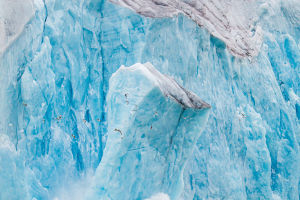Imagine walking into a sanctuary where towering woolly mammoths graze peacefully, shadowed by ghostly echoes of saber-toothed cats. Nearby, a once-extinct bird flutters by, its feathers vivid against the modern sky.
This isn’t science fiction — it’s the bold vision of a world where extinction is no longer the end, but perhaps just an intermission. With the emergence of companies like Colossal Biosciences, the idea of reviving extinct life is no longer just a wild dream. It's science, fueled by data, DNA, and determination.
What Is De-Extinction — And Why Now?
Extinction has always symbolized finality — the irreversible erasure of a species from Earth’s story. But the 21st century is rewriting that narrative. Thanks to advancements in CRISPR gene editing, synthetic biology, and comparative genomics, scientists can now recreate specific traits from extinct species by modifying the DNA of close living relatives.
This is not a matter of cloning ancient fossils. Rather, it involves decoding the genetic makeup of extinct species and engineering similar organisms through their modern counterparts. It’s a fusion of history, biology, and technology — and it’s no longer theoretical.
Colossal Biosciences: The Architects of Revival
Leading the charge in this groundbreaking domain is Colossal Biosciences, a biotech venture co-founded by Harvard geneticist George and entrepreneur Ben Lamm. In 2025, the company stunned the world by announcing the birth of three dire wolf-inspired pups — Romulus, Remus, and Khaleesi.
Rather than retrieving intact dire wolf DNA from fossils, scientists reprogrammed gray wolf embryos by inserting gene sequences believed to replicate the dire wolf’s key traits — jaw strength, size, and dense fur. Advanced AI-assisted gene mapping played a crucial role, helping the team isolate ancient traits and engineer them into viable, living organisms.
These wolves are not identical copies of their Ice Age ancestors. However, they represent the closest living embodiment of the dire wolf’s essence, bringing lost traits into the present in a truly biological form.
Beyond Wolves: Reviving Icons of the Ice Age and Beyond
Colossal’s vision stretches far beyond canines. Their broader mission targets multiple iconic species, including:
Woolly Mammoths: By merging mammoth DNA with that of the modern Asian elephant, the goal is to create cold-resistant hybrids that could repopulate the Arctic tundra, enhancing carbon sequestration and biodiversity.
Dodo Birds: Once native to Mauritius and wiped out by human interference, the dodo is now a priority target. Using avian cell culture and embryonic transfer, researchers hope to recreate the flightless bird and reintroduce it to controlled island habitats.This movement, dubbed “de-extinction for conservation,” seeks not only to revive species but also to repair ecosystems that collapsed in their absence. The return of keystone species — those that shape entire environments — may help revive the balance in fragile ecosystems worldwide.
The Global De-Extinction Ecosystem
Colossal isn’t working alone. Other organizations are also advancing this frontier:
Revive & Restore (USA): A nonprofit focused on reviving the passenger pigeon and genetically supporting endangered animals.
NEO-MEX (Mexico): Dedicated to restoring regional bird and amphibian species through CRISPR and DNA banks.
The Lazarus Project (Australia): Gained attention for briefly reviving the extinct gastric-brooding frog using somatic cell nuclear transfer.
Together, these efforts hint at the emergence of an entirely new industry — one that may shape the future of biodiversity recovery.
AI: The Silent Engineer Behind the Scenes
In this high-stakes scientific pursuit, Artificial Intelligence serves as the engine driving precision and speed. AI is used to:
Analyze and compare ancient genomes.
Predict phenotypic expressions — how genes translate into physical traits.
Simulate ecological outcomes — projecting how reintroduced species might interact with modern ecosystems.
In essence, AI operates as the invisible architect, ensuring these biological experiments are not only successful but sustainable.
Final Thought: Should We Do It?
Bringing back extinct species stirs wonder, but also a profound question: just because we can, does it mean we should?
De-extinction is not a miracle fix for environmental damage. It cannot replace lost rainforests, poisoned rivers, or melting glaciers. Nor should it divert attention from species currently on the edge of extinction.
However, when used with caution and clear goals, de-extinction might help heal ecological wounds, drive genetic innovation, and reimagine humanity’s relationship with nature. The road ahead is uncertain — paved with hope, awe, and moral complexity. Yet it offers a chance to reflect: what kind of future do we want to build? One that mourns the past — or one bold enough to bring it back?


